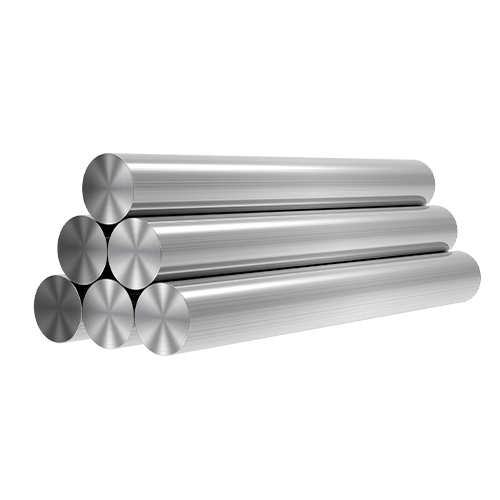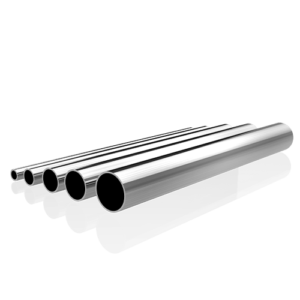Introduction

In the realm of modern architecture, materials play a crucial role in shaping the aesthetic appeal, structural integrity, and functionality of buildings. Among these materials, round steel rods have emerged as versatile components, offering architects and designers a plethora of creative possibilities. This article explores the innovative applications of round steel rods in contemporary architecture, showcasing their adaptability, strength, and visual appeal.
Advantages of Round Steel Rods
Round steel rods offer a multitude of advantages that solidify their position as a preferred material in modern architectural designs. Let’s delve deeper into each of these advantages:
Strength and Durability
Round steel rods boast exceptional strength and durability, making them ideal for structural applications in architecture. Their ability to withstand heavy loads, impacts, and environmental factors such as extreme weather conditions or seismic activity ensures the longevity and stability of architectural structures. Whether used in tension members, reinforcement within concrete, or as support elements, steel rods provide a reliable foundation for the built environment, instilling confidence in the safety and resilience of buildings.
Versatility
The malleability of steel rods opens up a world of design possibilities for architects and designers. Unlike rigid materials that limit creativity, steel rods can be easily manipulated into various shapes and forms through bending, twisting, and welding techniques. This versatility allows for the creation of intricate architectural elements, from ornate decorative features to complex structural frameworks. Whether used as standalone elements or integrated with other materials, steel rods offer unparalleled flexibility in realizing architectural visions, accommodating both aesthetic preferences and functional requirements.
Aesthetic Appeal
In addition to their structural prowess, steel rods contribute to the visual allure of architectural designs. The sleek, cylindrical profile of steel rods exudes a sense of modernity and sophistication, lending a timeless elegance to buildings. Their minimalist aesthetic complements a wide range of architectural styles, from contemporary skyscrapers to industrial-inspired lofts. Furthermore, the reflective properties of steel can enhance natural lighting within interior spaces, creating dynamic interplays of light and shadow that enrich the sensory experience of occupants. Whether used as exposed structural elements, decorative accents, or innovative design features, round steel rods elevate the visual impact of architectural compositions, captivating observers with their understated beauty and refined craftsmanship.
In conclusion, the advantages of steel rods extend far beyond their mechanical properties, encompassing versatility, aesthetic appeal, and structural integrity. As architects continue to push the boundaries of innovation in architectural design, steel rods will remain indispensable materials, empowering creative expression and shaping the built environment for generations to come.
Design Inspirations
Architects and designers have leveraged round steel rods to realize innovative and visually striking architectural concepts:
- Sculptural Installations: steel rods are often employed to create sculptural installations within architectural spaces, blurring the boundaries between art and architecture.
- Façade Cladding: Integrating steel rods into façade cladding systems offers opportunities for dynamic patterns and shading effects, adding depth and interest to building exteriors.
Sustainability and Environmental Impact
In an era where sustainability is paramount, round steel rods contribute to environmentally conscious architectural practices:
- Recyclability: Steel is one of the most recycled materials globally, making round steel rods a sustainable choice for architects concerned with reducing carbon footprint.
- Energy Efficiency: Buildings incorporating steel rods can benefit from improved energy efficiency, as steel’s thermal properties aid in regulating interior temperatures.
Applications in Structural Design

The structural integrity of buildings heavily relies on the effective utilization of materials, and round steel rods offer unique opportunities in this regard:
| Application | Description |
|---|---|
| Tensile Structures | Round steel rods are ideal for creating tensile structures, such as suspension bridges and canopies, due to their high tensile strength. |
| Reinforcement in Concrete | When embedded within concrete, steel rods enhance its tensile strength, mitigating cracking and improving overall structural stability. |
| Space Frames | steel rods are commonly used in space frame structures, providing a lightweight yet robust framework for large-span buildings. |
Conclusion
The innovative use of round steel rods in modern architecture exemplifies the intersection of functionality, aesthetics, and sustainability. From structural frameworks to artistic installations, these versatile components continue to redefine the possibilities of architectural design. As the architectural landscape evolves, round steel rods will undoubtedly remain a staple material, inspiring creativity and pushing the boundaries of what is achievable in contemporary construction.
FAQ
Q: Are round steel rods suitable for exterior applications?
A: Yes, round steel rods are often galvanized or coated to enhance their corrosion resistance, making them suitable for exterior use.
Q: What are the limitations of using steel rods in architecture?
A: While highly versatile, steel rods may have limitations in extremely corrosive environments or applications requiring exceptionally high strength-to-weight ratios.
Q: Can round steel rods be used in conjunction with other materials?
A: Absolutely, round steel rods complement a wide range of materials such as glass, wood, and concrete, offering architects endless possibilities for creative integration.
Q: Are round steel rods cost-effective compared to alternative materials?
A: While initial costs may vary, the durability and longevity of round steel rods often result in long-term cost savings through reduced maintenance and replacement expenses.
